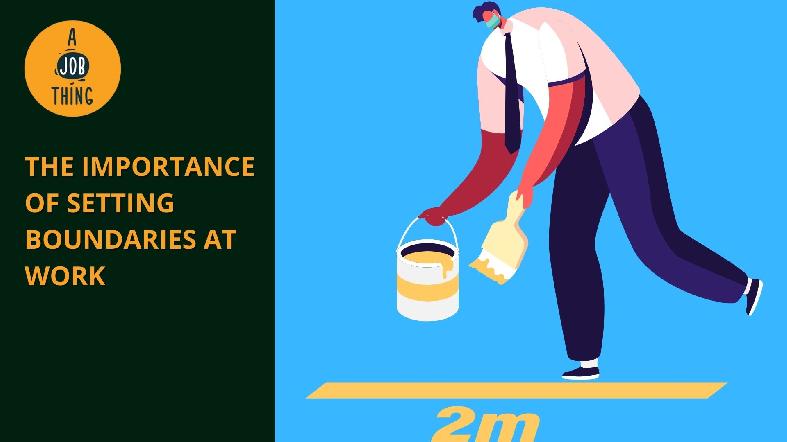
The Importance of Setting Boundaries at Work
Create Job Description Using AI
Write appealing job descriptions for any job opening to attract the most qualifield and suitable candidates. FOR FREE.
try now
The pandemic has rendered the concept of work-life balance obsolete. As more employees began working from home, personal and professional life barriers became increasingly blurred, resulting in significant burnout.
It's crucial to understand that there are two types of boundaries: those that workers can set and those that managers can endorse (or remove). Boundaries should be owned and respected by both parties. Managers must ensure that their boundaries are discussed and respected, especially now, when most are burned out, tired, concerned, and stretched thin.
Here are a few instances of ways a manager may push an employee's boundaries at work:
-
Call the employee outside of working hours, on annual leave, or while they are sick,
-
Expect them to go above and beyond in their job without the necessary compensation, recognition, or support,
-
Being refused vacation time for no apparent reason,
-
Share too much or become too personal without the employee's consent,
-
Expect them to attend activities that they are uncomfortable with (for instance, a happy hour when the employee isn't comfortable being around alcohol),
-
When establishing boundaries, the employee is slighted, snubbed, or insulted in any way,
-
Expect the employee to be 'on all the time'.
How managers can help employees to set boundaries
As a boss, here are several strategies to set boundaries for your employees to avoid burnout:
-
Check in with your staff,
-
Do not overload your team members with tasks that fall outside the scope of their responsibility. If you have to do so, make it clear to them what it means for their career growth,
-
When employees set their boundaries, be empathetic and understanding,
-
Be respectful of employees' annual leaves or sick days,
-
Provide wellness days, and
-
Model boundary-setting behaviour by accepting suggestions in the employee section below.
-
Resist the urge to contact an employee when they are not scheduled or able to work.
How to set boundaries at work
1. Determine your personal boundaries
You'll need to analyse your boundaries, their limits, and how to set them before communicating them. Your values and priorities in life will determine your own boundaries.
Consider your personal life, relationships, passions, and personal space in addition to your work.
-
Understand your limits,
-
Pay close attention to your emotions,
-
Allow yourself to establish boundaries, and finally
-
Consider your surroundings.
2. Communicate your boundaries upfront
Communicate your priorities and values once you've established them. It might be as simple as informing your team members that you do not respond to emails after 7:00 p.m.
Use this time to communicate what defines a work "emergency" so that you don't have to deal with "crises" during your off-hours.
When you take the time to communicate upfront, you protect yourself against future miscommunications.
3. Set clear structures
In the workplace, structure is crucial. You are the designer of your own boundaries, so you must build them strong. If you set up a time block for "do-not-disturb" work, your coworkers will be less inclined to interrupt you.
If you're a manager, you can create structures that involve building out team responsibilities. This sets clear guidelines for where responsibility lies in various situations.
4. Write down your boundaries, and put them where others can see them
Here are some examples:
-
I will not look at emails when I'm on a lunch break,
-
I will shut down at the end of my shift, and
-
I will block off time on the calendar for me, so I will not be in meetings throughout the day.
Building boundaries takes time, and some individuals are unaware that they're continuously breaking them, such as the coworker who taps you on the shoulder while you're deep in thought and wearing headphones.
Breaking boundaries isn't a step back. Rather, use it as an opportunity to educate your coworkers on how to interact with you effectively, when to interrupt you (if at all), and what they may reasonably anticipate from you.





